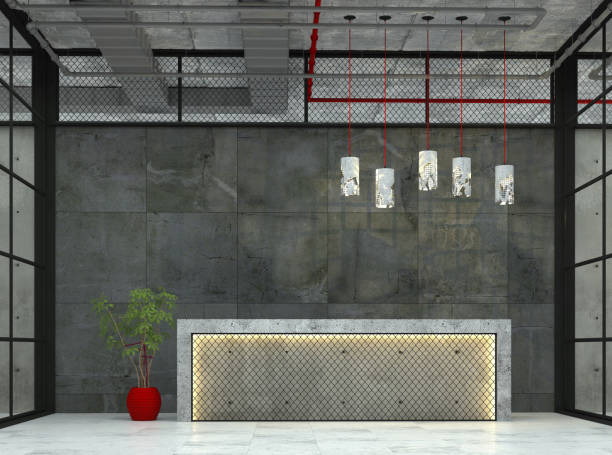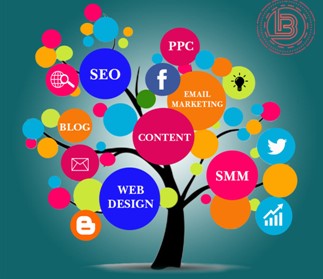In today's digital age, having a strong online presence is crucial for businesses to succeed.…

The Art and Functionality of the Receptionist Desk: A Central Hub for First Impressions
Evolution of Receptionist Desk
The receptionist desk serves as the focal point of any organization, embodying both the face and functionality of the business. This essential piece of furniture is not merely a station for greeting visitors; it is a dynamic space that contributes significantly to the overall atmosphere and efficiency of a workplace. In this article, we will delve into the multifaceted aspects of the receptionist desk, exploring its design, role, and the critical role it plays in creating lasting first impressions.
Designing for First Impressions
The receptionist desk is often the first point of contact for clients, visitors, and employees alike. As such, its design is paramount in shaping the initial perception of the organization. A well-designed desk is not only aesthetically pleasing but also aligns with the company’s brand and values.
Considerations for design include the choice of materials, colors, and overall layout. Modern businesses often opt for sleek and minimalist designs to convey professionalism, while creative industries may lean towards more vibrant and unconventional styles. The desk should seamlessly integrate with the overall office design, creating a cohesive and inviting atmosphere.
The ergonomic aspects of the desk are equally crucial. The receptionist often spends extended periods at the desk, necessitating a comfortable and functional workspace. Adjustable chairs, proper lighting, and easily accessible storage contribute to both the well-being of the receptionist and the overall efficiency of the reception area.
Functionality Beyond Greetings
While the primary role of the receptionist desk is to welcome and assist visitors, its functionality extends far beyond mere greetings. The desk serves as a central hub for various administrative tasks, necessitating careful consideration of its layout and organization.
Efficient organization is key to a functioning reception area. The desk should have designated spaces for essential tools, such as a computer, phone, and organizational tools like calendars or scheduling software. Adequate storage solutions, such as drawers or shelves, help keep the space clutter-free, contributing to a more organized and professional appearance.
In addition to administrative tasks, the receptionist desk often serves as a point of contact for inquiries and information. This requires the integration of communication tools, such as a phone system and possibly a computer with internet access. Providing the necessary tools ensures that the receptionist can effectively manage inquiries, creating a smooth flow of information within the organization.
Technology Integration
As technology continues to advance, the role of the receptionist desk evolves to incorporate new tools and systems. Digital sign-in systems, for example, have become increasingly popular, streamlining the visitor registration process. These systems not only enhance efficiency but also contribute to a modern and tech-savvy image.
Moreover, many organizations are integrating communication and collaboration tools directly into the receptionist desk. Video conferencing capabilities, instant messaging, and document sharing can enhance the receptionist’s ability to connect with both internal and external stakeholders, making the desk a central communication hub within the office.
Security Measures
The receptionist desk often plays a vital role in maintaining security within an organization. Access control systems, visitor badge issuance, and surveillance monitoring may be centralized at the reception area. This ensures that only authorized individuals gain entry to the premises and that visitor activities are monitored for the safety of everyone in the office workplace.
Incorporating security measures into the design the receptionist desk requires thoughtful planning. The placement of surveillance monitors, access card readers, and other security equipment should be discreet yet easily accessible for the receptionist to manage effectively. Balancing security needs with a welcoming atmosphere is essential to creating a positive experience for visitors.
Creating a Welcoming Atmosphere
Beyond its practical functions, the receptionist desk plays a pivotal role in shaping the overall atmosphere of the workplace. It serves as a reflection of the company culture and values, contributing to the creation of a welcoming and positive environment.
One way to enhance the atmosphere is through thoughtful decor. A well-chosen reception desk, accompanied by tasteful artwork, plants, or branding elements, can create a visually appealing and inviting space. Comfortable seating for visitors is also a crucial consideration, allowing them to wait comfortably and making a positive impression.
The receptionist, as the first point of contact, plays a significant role in setting the tone for interactions within the organization. Training and empowering receptionists to be friendly, approachable, and knowledgeable contribute to a positive experience for visitors and employees alike. Effective communication skills are essential, as the receptionist often acts as a liaison between various departments and individuals within the company.
Conclusion
In conclusion, the receptionist desk is a multifaceted and central element of any organization. Its design, functionality, and role in creating first impressions make it a crucial component of the overall workplace environment. As businesses continue to evolve, so too will the receptionist desk, integrating new technologies and design trends to ensure that it remains a dynamic and integral part of the modern office. By understanding the importance of the receptionist desk and investing in its thoughtful design and functionality, organizations can create a positive and lasting impression on visitors and set the stage for a productive and welcoming workplace.




This Post Has 0 Comments